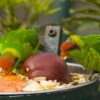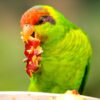DID YOU KNOW?
The Iris Lorikeet has a strongly built beak, more so than most lories and lorikeets. It is speculated that this may be an adaptation for a unspecified item in its diet.

Trichoglossus

iris
Size:
20 cm (7.8 in)
Weight:
65-75 g (2.3-2.6 oz)
Subspecies including nominate:
three: T.i. iris, T.i. rubripileum, T.i. wetterensis
Colour Adult:
T.i. iris: Both adults in general yellow/green; red forecrown and area above eye, in female less extensive and lighter; purple/blue band from area behind eye to ear coverts; sides of hindneck purple/blue; pale grey/blue occiput; nuchal collar yellow/green; yellow/green underparts barred with darker green. Beak orange/red. Eye orange.
T.i. rubripileum: Both adults forecrown to occiput red, with minimal grey/blue.
T.i. wetterensis: Both adults darker red forecrown with grey/blue mixed in; eye to ear coverts has darker purple band; dull red/brown wash on forecheeks with blue tint; darker barring on underparts; larger.
Colour Juvenile:
T.i. iris: As in adult female, but with less red on forecrown; band from behind eye to ear coverts duller. Beak brown. Eye brown.
T.i. rubripileum: As in adults.
T.i. wetterensis: As in adults.
Call:
Calls are a variety of screeches, some shrill, and whistles.
More Information:
Content Sources:
CITES
BirdLife International
Cornell Lab of Ornithology/Birds of the World
Parrots: A Guide to Parrots of the World, Juniper and Parr, 1998
Parrots: Status Survey and Conservation Plan 2000-2004, Snyder, McGowan, Gilardi, Grajal, 2000.
Parrots of the World, Forshaw, 2006. 2010 edition
Parrots in Aviculture, Low, 1992.
Lexicon of Parrots, Thomas Arndt.
Parrots: Their Care and Breeding, Low, 1986.
Captive Status:
Fairly rare
Longevity:
25 yrs or more.
Housing:
Aviary with concrete or tiled floor and washable walls, with a drain, or suspended enclosure with same, 2.5 x 1 x 2 m (8.2 x 3.3 x 6.5 ft).
Diet:
Nectar, a commercial type or one homemade from: lactose-free baby cereal, honey and malt extract or molasses, mixed with filtered water and made fresh once or twice daily, comprising about 5 to 10 percent of the diet; fruits such as: apple, pear, orange, banana, kiwi, pomegranate, cactus fruits; vegetables such as: carrot, fresh corn on the cob; green leaves such as: Swiss chard, lettuce, kale, sowthistle, dandelion, chickweed; dried figs soaked in water for a few hours; spray millet; small amount of soaked or sprouted sunflower seed and some canary seed and/or oats.
Enrichment:
Are vigorous chewers so provide bird-safe, unsprayed flowering, willow, elder, fir or pine branches; wooden block or vegetable tanned leather toys (remove promptly when soiled); heat sterilized pine cones. Also provide overhead misters or shallow, water filled bowls for bathing.
Nest Box Size:
Nest log or vertical box 8″ x 8″ x 16″ (20.3 cm x 20.3 cm x 40.6 cm).
Clutch Size:
2
Fledging Age:
8 weeks
Hatch Weight:
—
Peak Weight:
—
Weaning Weight:
—
World Population:
7500-20,000 mature individuals, decreasing.
IUCN Red List Status:
Near Threatened
CITES Listing:
Appendix II
Threat Summary:
Not globally threatened. A BirdLife “restricted-range” species. The least common of the three lorikeets on Timor in recent decades. The two main threats to this species are habitat loss and degradation and likely trapping for the pet trade. Over the past three generations, forest loss has caused a reduction in tree cover of 5-7% in this species’ range, which has largely been driven by agriculture and clearance for plantations almost entirely on Timor. Precautionarily, population declines over the past three generations are suspected to fall in the range of 5-19%.
Range:
T.i. iris: W Timor.
T.i. rubripileum: E Timor.
T.i wetterrensis: Wetar Island.
Habitat:
Found up to 1500 m (4920 ft) in monsoon forest, woodland, plantations and agricultural land with flowering trees.
Wild Diet:
Visits flowering trees including Sesbania. Recorded feeding in Eucalyptus alba and in tamarinds.
Ecology and Behaviour:
Seen in small groups; inconspicuous and shy. Occasionally seen in flocks of up to 50 individuals in heavily flowered trees.
Clutch and Egg Size:
2 eggs, 23.5 x 19.5 mm (0.9 x 0.7 in).
Breeding Season:
Not recorded.
Related Links:
—

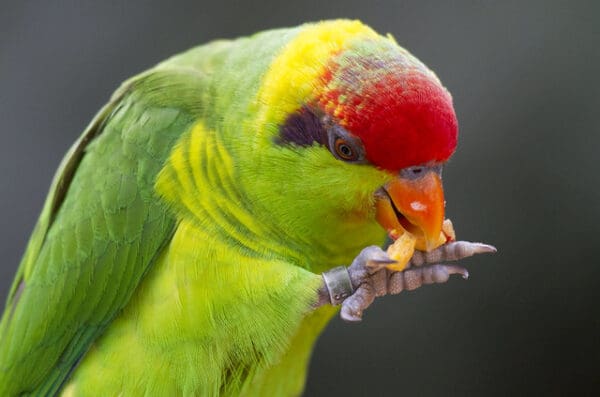
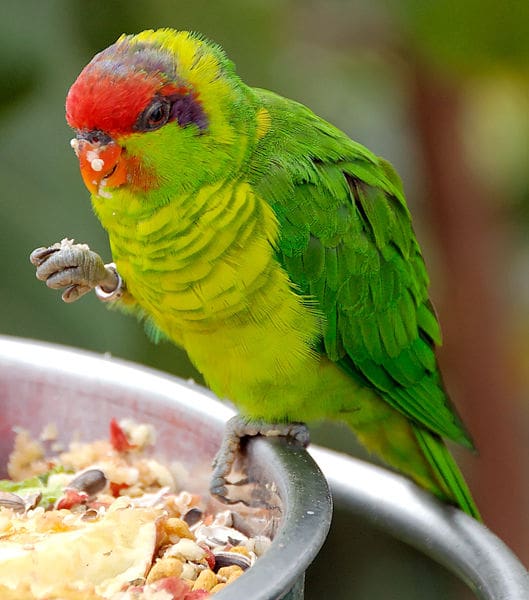
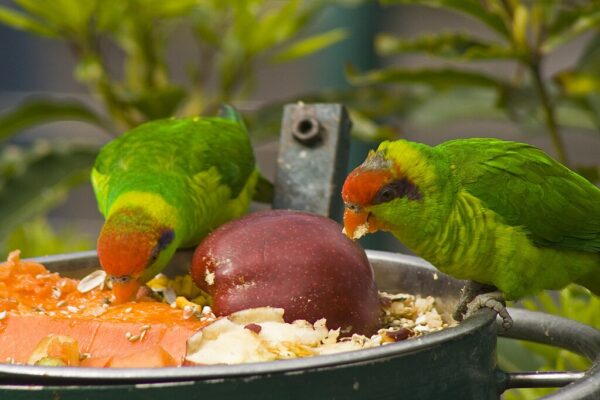

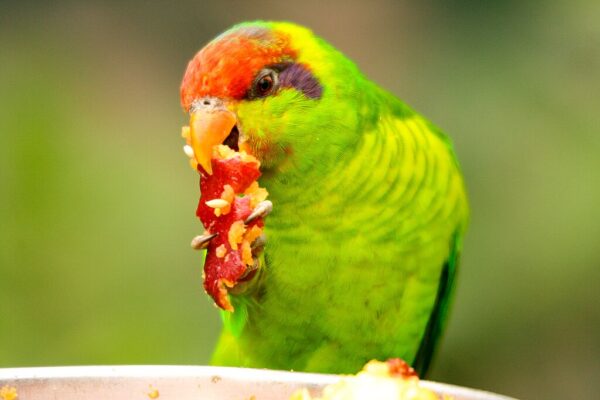
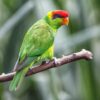
![© Nathan Rupert [CC BY-SA 2.0] via Flickr An Iris Lorikeet feeds at San Diego Zoo, USA](https://parrots.org/wp-content/uploads/2023/01/wpt_Iris-Lorikeet_1232-9-100x100.jpg)
![© Evan Parker [CC BY-SA 2.0] via Wikimedia Commons An Iris Lorikeet feeds at San Diego Zoo, USA](https://parrots.org/wp-content/uploads/2023/01/wpt_Iris-Lorikeet_1232-1-100x100.jpg)
